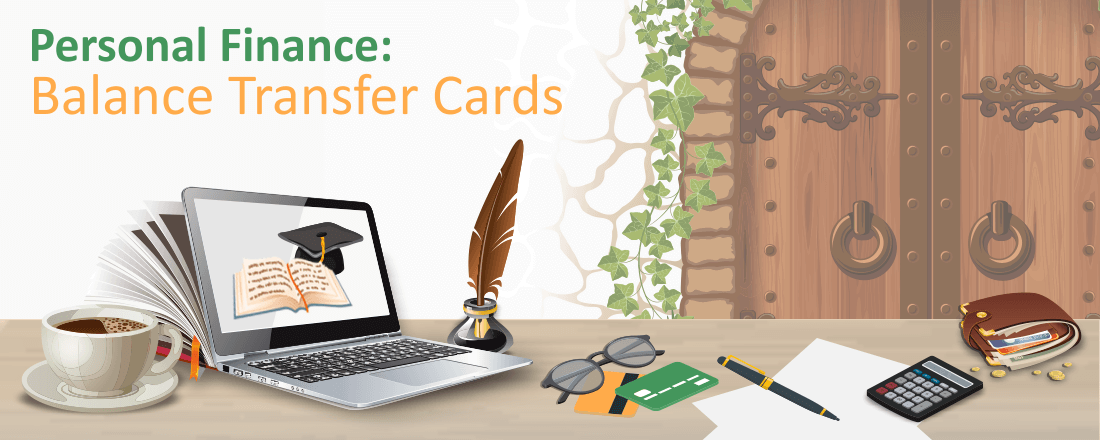
One of the most cost-effective ways to pay down credit card debt is to transfer the balance to a low interest credit card, also known as a
Consumers who are merely paying the minimum payment on their credit card balances are on the road to a lifetime of debt. The minimum payment is usually so low, that it keeps consumers in debt for decades.
How Interest Increases Your Debt Load
Before we describe the ins and outs of balance transfer cards, let’s take a step back. To fully understand the power of the balance transfer cards, it’s important to know how interest causes debt balances to swell into large and unmanageable levels.
Any time a balance is left on a credit card interest will start to accrue. The interest rates on credit cards can be 20% or more. That’s significantly higher than the interest rate you might pay on a 30-year fixed mortgage, which could be as low as 3%.
Interest is the sole reason why credit card debt can become unmanageable. Debt of $1,000 can easily double in a few short years. This is why it’s so important to have the lowest interest rate possible on your credit card if you plan to carry a balance.
You can try calling up your credit card company and asking them to lower the interest rate, but chances are they may only take a few percentage points off. That still gives you an
The Benefits of Balance Transfer Cards
What if you didn’t have to worry about interest payments? What if the interest rate on your credit card was zero percent? This is where balance transfer cards come into play.
More on this topic: What is a Balance Transfer and Can it Really Save Me Money?
Many of the major credit card companies offer balance transfer cards: Discover It 0% apr for 18-months or Citi Simplicity’s whooping 21-months balance transfer offer, just to name a few. With this process, you’re applying for an entirely new credit card and transferring the debt from your incumbent card to this new balance transfer card.
Many balance transfer cards come with an interest rate of zero percent. However, this rate typically only lasts for one or two years. After the low rate expires, it adjusts back towards an interest rate in-line with general credit cards–likely back to the rate you had before you opened up the balance transfer card.
A zero percent interest rate is incredibly beneficial, even if it’s just for one year. It ensures that your debt stays constant. In other words, it won’t increase during that period, which allows you to step off of the dangerous “debt treadmill.” Since interest causes your debt to increase, even if you’re making monthly payments to pay down your debt, you’re likely not making much of a dent in the overall balance because it’s constantly increasing.
Plus, the hundreds of dollars you’ll save over the year in interest expenses can be directed towards the actual debt, which puts you on a faster track to becoming debt free. It is during this one to two year period with the zero percent rate that you should make as much effort as possible to pay down the debt. Even throwing an extra $5 to $10 a month towards the debt will make an impact. It’s worth the short-term inconveniences of forgoing a daily latte or pastry to be able to free up some extra capital to pay down the debt balance. Every dollar counts.
It’s Called a Balance Transfer Card for a Reason
The
The zero percent interest rate generally only applies to the balance transferred onto the card. It does not apply for groceries, gasoline or any other typical credit card expenditures. If you use the card for such purchases, and you don’t pay off that entire balance in full, a much higher interest rate will kick in. The exact interest rate is written in the terms and conditions section of the credit card statement.
It doesn’t matter what the new, higher interest rate is. Simply don’t use the balance transfer card for anything other than the balance transfer. Try not to store this credit card in your wallet–that way, you can’t use it even if you wanted to. Or better yet, you may want to literally cut up the balance transfer card to ensure that it will never be used on common expenditures.
Don’t Forget to Make Payments With a Balance Transfer Card
Once your credit card debt balance is transferred, you still have to make payments — at least the minimum payment. Remember, paying the minimum payment is never advisable. It’s such a small amount that it’ll keep you in debt for years. But it’s the least amount of money you need to pay to keep the account current.
If you stop making payments on the balance transfer card, the zero percent interest rate could adjust back to a more normalized rate of say 20% for example. The zero percent interest rate is a gift–don’t take it for granted.
Watch for Balance Transfer Fees
The final factor to understand when it comes to balance transfer cards are fees. Some balance transfer cards charge a fee of three percent of the balance transferred. The money you’re saving from the zero percent interest rate will likely outweigh any balance transfer fees you may pay.
You can find

